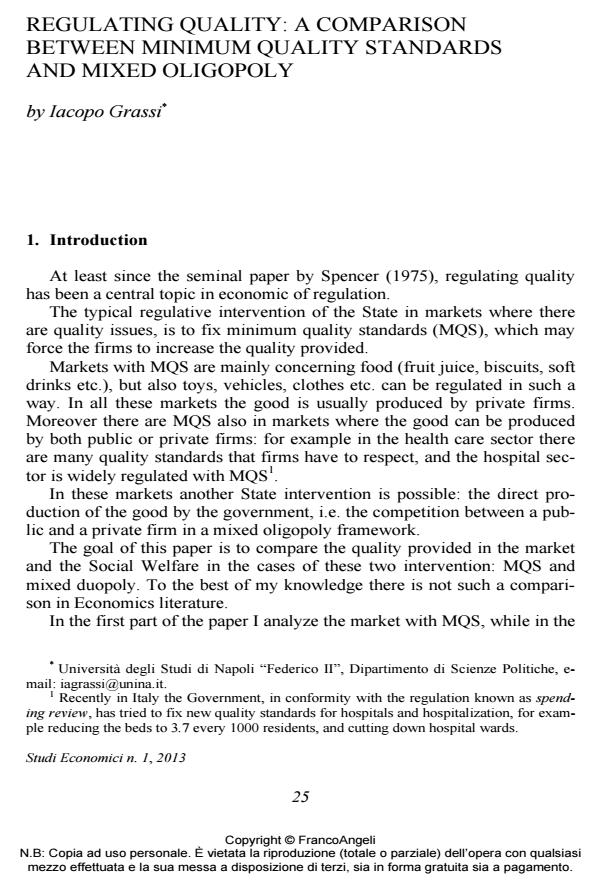Regulating quality: a comparison between minimum quality standards and mixed oligopoly
Journal title STUDI ECONOMICI
Author/s Iacopo Grassi
Publishing Year 2014 Issue 2013/109
Language English Pages 20 P. 25-44 File size 157 KB
DOI 10.3280/STE2013-109002
DOI is like a bar code for intellectual property: to have more infomation
click here
Below, you can see the article first page
If you want to buy this article in PDF format, you can do it, following the instructions to buy download credits

FrancoAngeli is member of Publishers International Linking Association, Inc (PILA), a not-for-profit association which run the CrossRef service enabling links to and from online scholarly content.
This paper compares two possible State interventions in a market where a vertical differentiable good is produced: minimum quality standards (MQS) and mixed competition. In the analysis of MQS I consider an endogenous standard, given by the maximization of the Social Welfare, and the possibility for the firms not to respect such a standard, selling a low quality illegal good. In the study of the mixed oligopoly I concentrate the analysis on sectors where there might be separation between managers (who set the prices maximizing the profit) and employees (who set the quality maximizing the social welfare). The main result is that in these sectors the presence of the public firm allows to increase the Social Welfare with respect to the case when the good is produced by private firms or by a firm regulated with MQS.
Keywords: MQS, mixed oligopoly, quality, regulation, piracy.
Jel codes: L13, L50, H44
Iacopo Grassi, Regulating quality: a comparison between minimum quality standards and mixed oligopoly in "STUDI ECONOMICI " 109/2013, pp 25-44, DOI: 10.3280/STE2013-109002